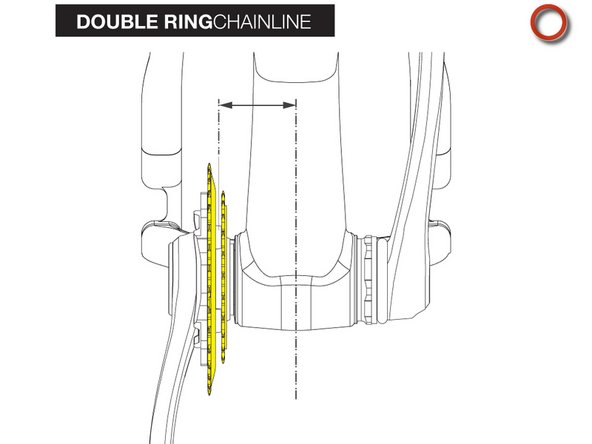Introduction
This walkthrough will teach you how to measure chainline and explain why it is important.
Tools
Parts
No parts specified.
-
-
Chainline is a term that will get thrown around often in our tech walkthroughs, so it is important to know what it means and how it will affect guide and crank fit and set-up
-
-
-
In its most basic definition chainline is the line of the chain
-
For a single speed bike, you simply want the chain as straight as possible
-
But, for multi-speed drivetrains, we complicate things a bit as the chain needs to move across the cassette and front chainrings (if there are any)
-
This means component and frame designers need to decide how best to line everything up so the chain stay relatively straight as the rider moves through the range of gears
-
-
-
Chainline is measured as a distance from the center of the frame to the center point of a cog tooth
-
Most 9, 10 and now 11 speed MTB drivetrains and frames are based around 49-51mm front chainlines as specified by component manufacturers
-
This means that if a front chainring is ~49-51mm from center, it will more or less line up with the middle of the cassette, providing the best chain angles possible
-
-
-
Triple cranks are measured to the middle of the middle ring
-
Double cranks are measured two ways
-
To the middle point between the two rings (Shimano)
-
To the middle of the outer ring (e*thirteen)
-
-
-
Single cranks are measured to the middle of the single ring
-
So why is all this important? Well, we have to design our guides around chainline in order for them to fit properly and not rub as your chain moves across your rings. It is, of course, a bit more complicated than that, but when deciding on, or fitting a guide, knowing what chainline your cranks use will ensure that you pick the right guide.
-
-
-
As a rule, most of our single ring guides are designed around 50-51mm chainlines, most single ring and DH cranks use this chainline
-
Some of our XCX guides go all the way out to 53mm, this is so they will work on 120bcd Sram cranks in conjunction with our 120bcd Guidering
-
-
-
Our TRS line of dual (2x) ring guides will fit both standard doubles and wide chainline double cranks
-
Standard doubles are essentially converted triple cranks missing the big ring, sometimes a bash is used in the big ring position. These cranks have a 51mm chainline as measured to the center of the bigger of the two rings
-
All e*thirteen cranks are standard doubles
-
Wide doubles, that is 2x cranks with a wider chainline that are double specific are typically 53mm to the middle of the outer ring with no bash mounting position (both Sram and Shimano now offer these cranks)
-
For ISCG mounted guides spacers are use to adjust the chainline of the guide
-
For BB mounted guides we offer both a standard and wide backplate to fit the two chainlines
-
Thanks for reading, now get out there and ride!
Thanks for reading, now get out there and ride!















